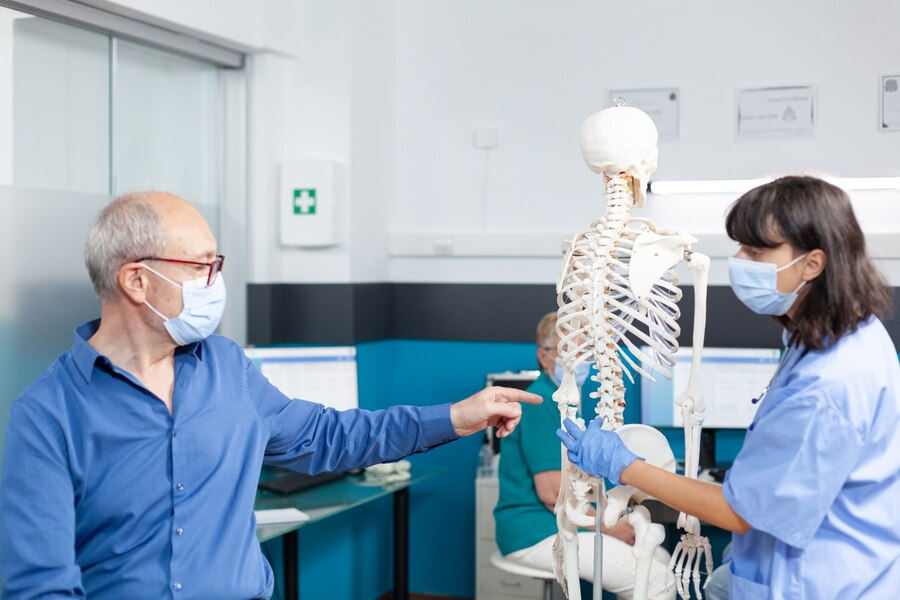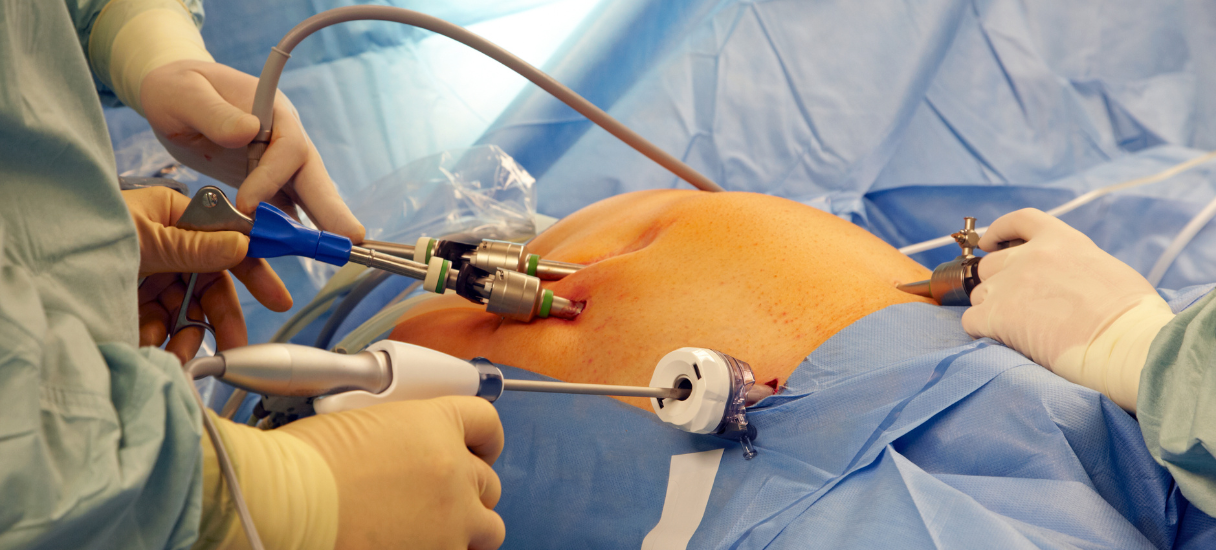Bone health is essential for maintaining overall well-being, especially as we grow older. Osteoporosis is a condition in which bones get weak with time, increasing the risk of fractures. An orthopedic specialist provides the right diagnosis and treats osteoporosis, helping patients maintain their bone health and improve their quality of life.
What is Osteoporosis?
It is a condition where bones become weak and brittle, making you more susceptible to fractures. This condition occurs when bone density decreases, and the body can’t produce enough new bone cells to replace the old bone that’s broken down. Osteoporosis is often called a “silent disease” because it progresses without any symptoms until a fracture occurs. Usually, the hip, spine, and wrist bones are fractured in osteoporosis.
Why is bone density important?
Bone density is a test of bone mineral density (BMD). It tells how much mineral is in each square centimeter of your bones. It reflects the strength and density of bones and is a crucial factor in diagnosing osteoporosis. Maintaining optimal bone density is essential for preventing fractures and ensuring overall bone health. According to an orthopedic surgeon, factors that influence bone density include age, gender, genetics, diet, and lifestyle habits.
How does an orthopedic surgeon diagnose osteoporosis?
An orthopedic surgeon uses several methods to diagnose osteoporosis, ensuring accurate assessment and appropriate treatment. Here is the explanation of the process of diagnosis:
Medical History and Physical Examination
The diagnosis begins with a thorough exploration and evaluation of medical history followed by a physical examination. An orthopedic specialist asks about risk factors such as family history of osteoporosis, previous fractures, lifestyle habits (e.g., smoking, alcohol consumption), and any medical conditions or medications that might affect bone health.
Bone Density Tests
The primary diagnostic tool for an orthopedic surgeon to diagnose osteoporosis is the bone density test, also known as dual-energy X-ray absorptiometry (DEXA or DXA) scan. This painless and non-invasive test measures bone density in the hip and spine. The results are compared to the bone density of a healthy young adult and are expressed as a T-score:
- Normal: T-score of -1.0 or above
- Osteopenia (low bone mass): T-score of -1.0 to -2.5
- Osteoporosis: T-score of -2.5 or below
Laboratory Tests
Laboratory tests help rule out other conditions that may cause bone loss and provide additional information about overall health. Common tests include:
- Blood tests: To measure levels of calcium, vitamin D, and other markers of bone metabolism.
- Urine tests: To check for bone turnover markers that indicate the rate of bone breakdown and formation.
Imaging Studies
In some cases, additional imaging studies may be required to assess bone health and detect fractures like:
- X-rays: To identify fractures or other abnormalities in the bones.
- MRI and CT scans: To provide detailed images of bone and soft tissues, especially useful in complex cases.
Treatment plan for osteoporosis
Once osteoporosis is diagnosed, an orthopedic surgeon develops a comprehensive treatment plan tailored to the patient’s needs. Treatment aims to strengthen bones, prevent fractures, and improve quality of life. Here are the main components of osteoporosis treatment:
Lifestyle Modifications
An orthopedic specialist often recommends lifestyle changes to improve bone health and reduce fracture risk:
- Diet
Take a balanced diet which should be essentially abundant in calcium and vitamin D. Include dairy products, leafy greens, fortified foods, and fish in your diet. Consider supplements if dietary intake is insufficient.
· Exercise
Weight-bearing exercises (e.g., walking, jogging, dancing) and strength training promote bone health. Exercise helps maintain bone density, improve balance, and reduce the risk of falls.
- Avoid smoking and limit alcohol
Smoking and excessive alcohol consumption can weaken bones. Quitting smoking and alcohol intake can greatly improve bone health.
Medications
Several medications are available to treat osteoporosis, and an orthopedic surgeon prescribes them based on the patient’s specific needs and risk factors:
- Bisphosphonates: These medications slow down bone loss and reduce fracture risk.
- Denosumab: This injectable medication helps prevent bone loss and fractures by inhibiting the activity of osteoclasts (cells that break down bone).
- Selective Estrogen Receptor Modulators (SERMs): Medications like raloxifene mimic estrogen’s beneficial effects on bone density without some of the risks associated with hormone replacement therapy.
- Hormone Replacement Therapy (HRT): For postmenopausal women, HRT can help maintain bone density, but it is usually considered when other treatments are not suitable due to its potential risks.
- Parathyroid hormone analogs: Medications like teriparatide and abaloparatide stimulate new bone formation and are used for severe osteoporosis.
- Romosozumab: This medication both increases bone formation and decreases bone resorption, making it effective in reducing fracture risk.
Fall Prevention
Osteoporosis patients should be more attentive in preventing falls as it can lead to fractures. An orthopedic surgeon advises patients to take preventive measures to reduce fall risk:
- Make the home environment safe by removing tripping hazards, using non-slip mats, and installing grab bars in bathrooms.
- Regular eye and hearing check-ups can help maintain balance and prevent falls.
- Wear supportive and non-slip shoes to reduce the risk of slipping and falling.
Surgical Intervention
In cases of severe fractures or complications, an orthopedic surgeon may recommend surgical intervention. Surgical options depend on the type and location of the fracture:
- Vertebroplasty and kyphoplasty: These minimally invasive procedures stabilize vertebral fractures and reduce pain.
- Hip and joint replacement: Severe fractures in the hip or joints may require replacement surgery to restore function and reduce pain.
Post-Treatment Care and Monitoring
Managing osteoporosis is an ongoing process. After initiating treatment, an orthopedic surgeon regularly monitors patients to assess the effectiveness of the treatment and make necessary adjustments. Post-treatment care includes:
- Regular follow-up appointments with an orthopedic specialist are essential to monitor bone density, review medication effectiveness, and address any concerns or side effects.
- Repeated bone density tests through Periodic DEXA scans to trace the changes in bone density and evaluate the effectiveness of the treatment plan.
- Encouraging patients to adhere to their prescribed medications and lifestyle modifications is crucial for maintaining bone health and preventing fractures.
Conclusion
By following the advice of an expert and staying proactive in bone health management, patients can lead healthier, more active lives. If you have concerns about your bone health, consult with an orthopedic specialist to ensure you receive the best care and guidance.





